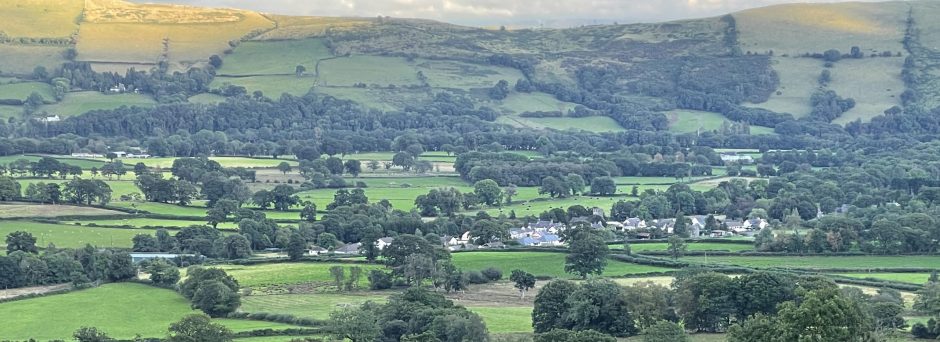Recent work on the historic landscapes of the National Botanic Garden of Wales
Red Dragon captained by Henry Middleton during the second voyage of the East India Company 1604-05
Professor David Austin, from the University of Wales Trinity Saint David, kindly agreed to come and give a talk to the Upper Tywi Valley History Group, on Tuesday 10th April at the, Royal Oak Rhandirmwyn on the exciting archaeological project on the site of the ‘old’ Middleton Hall at what is now the National Botanic Garden of Wales. Most people assume that the ‘old’ Middleton Hall is the one built by Sir William Paxton at the end of the 18th century which burnt down in 1931, but there was an earlier family on the site of Middletons or Myddleton’s whose roots were in Cheshire and North Wales who built an earlier hall in the early 1600’s at Waunlas, east of Paxton’s later mansion.
They came from a family of adventurous brothers who founded the East India Company and risked disease and death to obtain fabulous wealth through the spice trade. The complex genealogical tracking has yet to be completed, but it appears as if they were looking to establish themselves in south Wales close to the south Wales ports and chose to invest in land bought from the Duchy of Lancaster, which became the Middleton hall estate.
By 1644 Henry Middleton the son of David Middleton whose ship sank on the perilous return voyage from the East Indies was in possession of Middleton Hall as he appears in the records as a High Sheriff of Carmarthenshire at that date. The Middleton’s and their descendants lived at Middleton Hall until the 1780’s when mounting debts due to two generations of big spenders, forced the last of them Francis Edward Gwyn to sell up the estate.
The site of the Middletons’ hall was known about but never investigated until last summer when a team of archaeologists led by David Austin, undertook a two week excavation. The test pits uncovered cobbling with large holes on what is thought to be the house platform, which could have housed columns holding up some kind of portico. Another trench exposed one of the many water features on the field in front of the house, a further trench revealed evidence of planting holes, reminiscent of box edging. A lot of pottery was also recovered dating to the time of the houses use, intriguingly medieval pottery was also found which suggests earlier occupation possibly a third Middleton Hall, who knows!
In February I was lucky enough to be able to assist with further geophysical surveying of the site which revealed a complicated picture both on the house platform of a variety of building phases, and in the field in front of the house which appears to be a Renaissance water garden with many paths, beds and canals which would have drained into a river at the bottom of the site.
This summer there are plans to continue with the excavations to piece together more information about this mysterious and fascinating estate, visitors to the Garden will be able to come and see the dig in progress.
Sara fox



